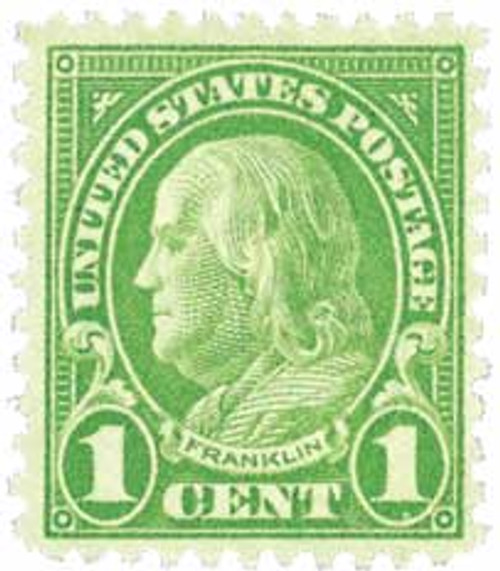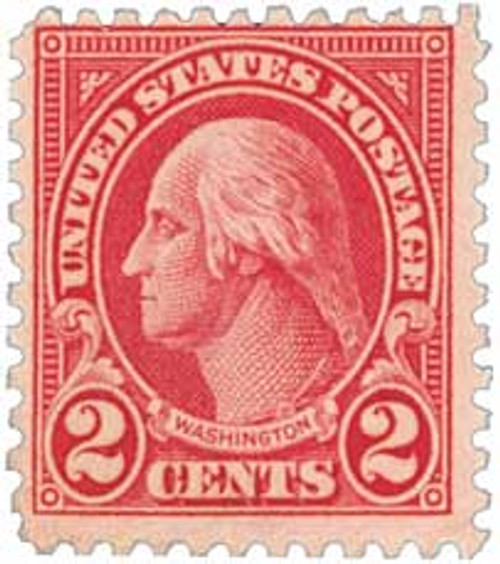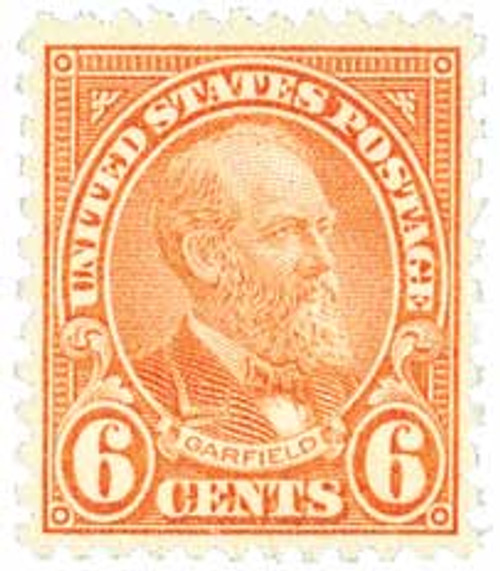
# 631-42 - 1926-28 Rotary Issues, collection of 13 stamps
Save on Early Rotary Printing Stamp Set
America’s first Rotary stamps were printed in 1915. The printing press “rolled” the images onto the stamps, making the printing process simpler and quicker than with a flat plate press. The stamps in this set are among the earliest sheet stamps printed by this method, making them important additions to your collection.
Perfecting Perforations on Rotary Stamps
When the Bureau began printing sheets on the rotary press, they found 11 gauge perforations were too fine, causing the stamps to separate prematurely. This resulted in the perforations being changed back to 10 gauge perforations, which had first been used in 1915. Once again, objections were raised, and the Bureau began looking for a way to perforate the stamps so they were strong enough to resist premature separation, yet fine enough to be separated without difficulty. The solution was found in a compromise that resulted in a new perforation – the 10 1/2 gauge.
This perforation seemed to please everyone and was adopted as the new standard for rotary press sheets. In the words of Linn’s author Gary Griffith, the 1926-28 Compound Perforation rotary stamps represent “if not perfection, then at least a high degree of achievement...”
Set includes US #631 (the only imperforate stamp in the set). Often overlooked by collectors, #631 was accidentally printed by rotary press instead of flat plate press for a private coil company. The spacing between the panes was not acceptable to the company and the stamps were returned. Never distributed to any post office, #631 could be purchased only through the Philatelic Agency in Washington, D.C. For this reason it was overlooked by most collectors of the time. Today, it can be difficult to find.
The set also includes US #634A, which was the result of a re-cut die plate for US #634, which had been issued in 1926. As the original plate was used to print billions of stamps, the image began to wear down and the quality to decrease. The re-cut plates made a sharper, more defined stamp.
Get your complete set today and save.
Save on Early Rotary Printing Stamp Set
America’s first Rotary stamps were printed in 1915. The printing press “rolled” the images onto the stamps, making the printing process simpler and quicker than with a flat plate press. The stamps in this set are among the earliest sheet stamps printed by this method, making them important additions to your collection.
Perfecting Perforations on Rotary Stamps
When the Bureau began printing sheets on the rotary press, they found 11 gauge perforations were too fine, causing the stamps to separate prematurely. This resulted in the perforations being changed back to 10 gauge perforations, which had first been used in 1915. Once again, objections were raised, and the Bureau began looking for a way to perforate the stamps so they were strong enough to resist premature separation, yet fine enough to be separated without difficulty. The solution was found in a compromise that resulted in a new perforation – the 10 1/2 gauge.
This perforation seemed to please everyone and was adopted as the new standard for rotary press sheets. In the words of Linn’s author Gary Griffith, the 1926-28 Compound Perforation rotary stamps represent “if not perfection, then at least a high degree of achievement...”
Set includes US #631 (the only imperforate stamp in the set). Often overlooked by collectors, #631 was accidentally printed by rotary press instead of flat plate press for a private coil company. The spacing between the panes was not acceptable to the company and the stamps were returned. Never distributed to any post office, #631 could be purchased only through the Philatelic Agency in Washington, D.C. For this reason it was overlooked by most collectors of the time. Today, it can be difficult to find.
The set also includes US #634A, which was the result of a re-cut die plate for US #634, which had been issued in 1926. As the original plate was used to print billions of stamps, the image began to wear down and the quality to decrease. The re-cut plates made a sharper, more defined stamp.
Get your complete set today and save.














